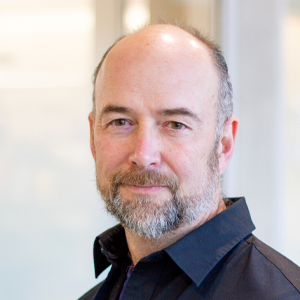Randy McIntosh is professor and BC leadership chair in neuroscience and technology transfer across the lifespan, and director of the Institute for Neuroscience and Neurotechnology, at Simon Fraser University. He holds a Ph.D. in psychology and neuroscience with a strong background in statistics. His research journey began at the Rotman Research Institute at the University of Toronto, where he developed a keen interest in understanding aging and cognition. McIntosh is the co-lead for the team that created The Virtual Brain (thevirtualbrain.org), a groundbreaking platform that unites global research efforts.

Randy McIntosh
Director, Institute for Neuroscience and Neurotechnology
Simon Fraser University
Selected articles
- “Partial least squares analysis of neuroimaging data: Applications and advances” | NeuroImage
- “Contexts and catalysts: A resolution of the localization and integration of function in the brain” | Neuroinformatics
- “Emerging concepts for the dynamical organization of resting-state activity in the brain” | Nature Reviews Neuroscience
- “Resting brains never rest: Computational insights into potential cognitive architectures” | Trends in Neurosciences
- “The hidden repertoire of brain dynamics and dysfunction” | Network Neuroscience
Explore more from The Transmitter
Some facial expressions are less reflexive than previously thought
A countenance such as a grimace activates many of the same cortical pathways as voluntary facial movements.

Some facial expressions are less reflexive than previously thought
A countenance such as a grimace activates many of the same cortical pathways as voluntary facial movements.
Cracking the neural code for emotional states
Rather than act as a simple switchboard for innate behaviors, the hypothalamus encodes an animal's internal state, which influences behavior.

Cracking the neural code for emotional states
Rather than act as a simple switchboard for innate behaviors, the hypothalamus encodes an animal's internal state, which influences behavior.
Alex Maier argues that a scientific explanation of consciousness requires grounding in formalized mathematics
When it comes to discovering laws of nature for consciousness similar to those in physics, Maier argues that integrated information theory is the only game in town.
Alex Maier argues that a scientific explanation of consciousness requires grounding in formalized mathematics
When it comes to discovering laws of nature for consciousness similar to those in physics, Maier argues that integrated information theory is the only game in town.